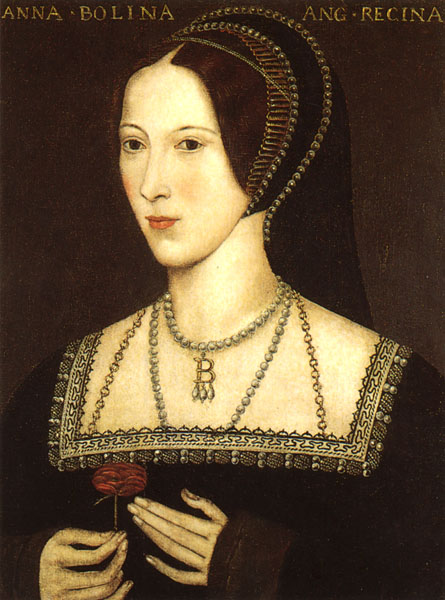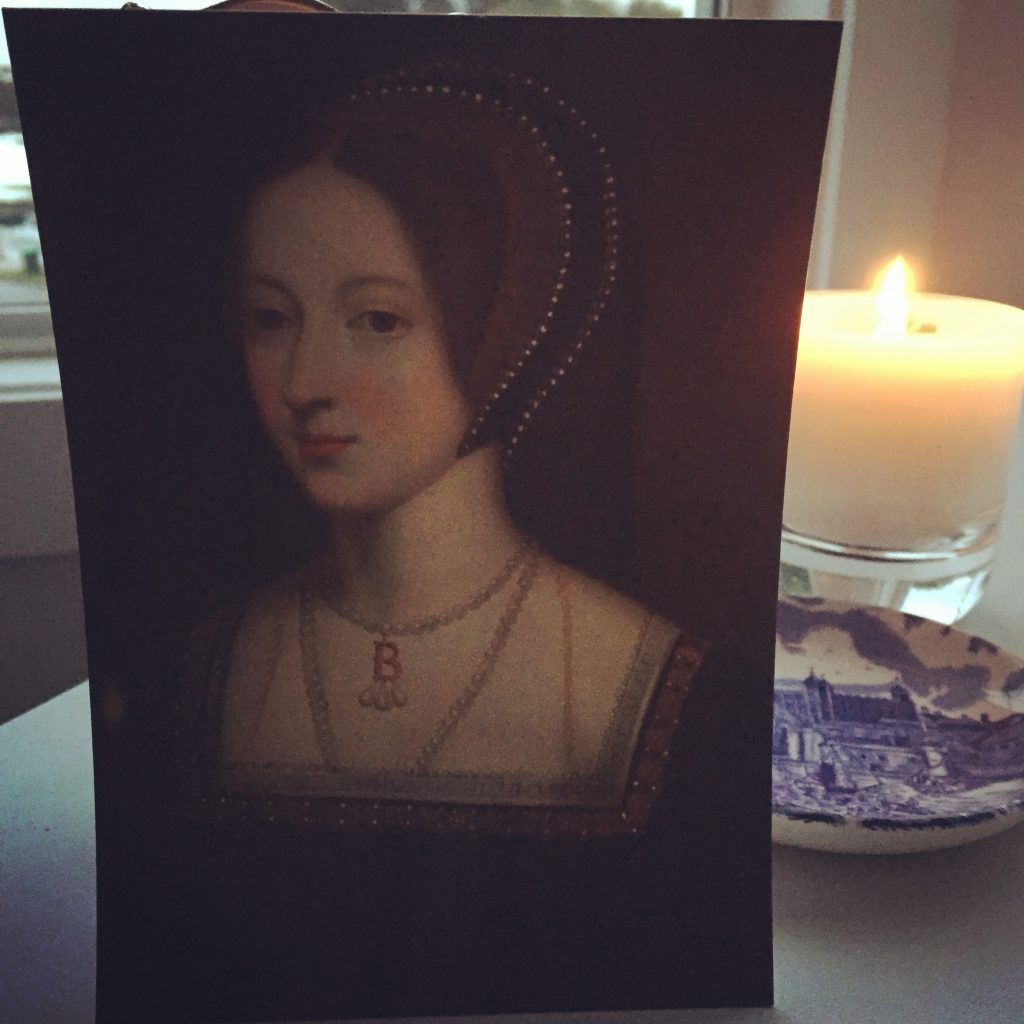
Anne Boleyn, by an anonymous painter. Hever Castle, Kent.
Early on the morning of 19 May 1536, Anne Boleyn, resplendent in a grey damask gown lined with fur, made her final journey from the Queen’s Apartments at the Tower of London, where she’d been imprisoned for the last 17 days, to the site of the scaffold. Escorted by Sir William Kingston, the Constable of the Tower, and four attendants, she made her way past the now lost King’s Hall, the setting of her lavish coronation festivities just three years earlier, and, more recently, her and her brother George’s sensational trials, where the Earl of Northumberland had collapsed after giving his guilty verdict against the woman he’d once loved and hoped to marry. Anne continued her solemn walk through the Cold Harbour Gate, to the open ground north of the White Tower, where a French executioner awaited her.
Around 1,000 people had gathered to see the first English queen beheaded. Among the spectators were men Anne knew well, including her teenaged step-son, Henry Fitzroy, who had only a couple of months to live; Charles Brandon, Duke of Suffolk, whom Anne had known since she herself was a teenager in attendance on Henry VIII’s sister, Mary Tudor, in France, and Thomas Cromwell, who’d soared to power with Anne’s support but who’d later turned against her.
After addressing the hushed onlookers, Anne went to her death with the same courage that she’d shown in life. Following Tudor scaffold etiquette to a tee, she did not protest against the king or the terribly unjust sentence, ‘For according to the law and by the law I am judged to die, and therefore, will speak nothing against it… I pray God save the king and send him long to reign over you, for a gentler nor a more merciful prince was there never, and to me he was ever a good, a gentle, and a sovereign lord.’ While Anne had not publicly protested her innocence, neither had she confessed to any great sin or wrongdoing, or admitted to deserving death for the crimes alleged against her. It’s what Anne omitted to say that spoke the loudest, especially to a Tudor audience, adept at reading between the lines. Anne Boleyn had subtly proclaimed her innocence, and news spread quickly around London that she’d died ‘boldly’.
Anne’s ladies covered their mistress with a sheet and carried her remains from the scaffold to the chapel of St Peter, within the Tower precinct, where they were placed in an elm chest and buried in the chancel, beside the remains of Anne’s brother George Boleyn. There they remain to this day.

Today marks the 481st anniversary of Anne’s death. 481 years since those ‘bloody days’, which broke the hearts and lives of many, as recalled by Thomas Wyatt in his poem ‘Innocentia Veritas Viat Fides Circumdederunt me itimici me’. The court turned their backs on Anne Boleyn, and on those condemned alongside her: George Boleyn, Henry Norris, Francis Weston, William Brereton and Mark Smeaton, however, they are not forgotten. Each year on this day, flowers are delivered to the Tower of London to lay on Anne’s grave and many people, including myself, commemorate her in some way. Funny that we can feel such a strong connection to a person that lived so long ago. In the preface to what remains the best full-length biography of Anne Boleyn, The Life and Death of Anne Boleyn, the late Professor Eric Ives described Anne ‘as the third woman in my life, after my immediate family’, a sentiment I completely understand. It’s been years now since I first encountered her, yet my fascination continues to grow, as do the questions. Perhaps the most perplexing, why did she have to die? Best left to a future discussion, except to say that I think the fact that Henry saw no other solution, and was willing to sacrifice the lives of men he knew well, is a testament not to her guilt, but to her sheer intellect and wit, and as Eric Ives described, her calibre.

There’s much to admire about Anne, like her intelligence and courage, and the fact that she fought for what she believed in and voiced her opinions in a century when women, especially queen consorts, were expected to be submissive and silent. She was not perfect by any stretch of the imagination, but who among us is?
To celebrate the life of this remarkable woman, and thanks to the generosity of my publisher, The History Press, I’d like to give away a copy of ‘Colouring History: The Tudors’ to one lucky reader. To enter, simply leave a comment after this post. Conditions of entry below.
Good luck!
Conditions of Entry
For your chance to win a copy of Colouring History: The Tudors, you must be subscribed to On the Tudor Trail’s newsletter (if you are not already, sign up on our homepage where it says ‘Free Enewsletter Subscription’).
Then simply leave a comment after this post between now and 24 May 2017. Don’t forget to leave your name and a contact email. Please note that I have comment moderation activated and need to ‘approve’ comments before they appear. There is no need to submit your comment twice.
This giveaway is open internationally.
A winner will be selected randomly and contacted by email shortly after the competition closes. Please ensure you’ve added natalie@onthetudortrail.com to your address book to avoid missing my email.


















Thank you for all of the work you put into this. Truly a subject I will never tire of. Thanks also for the opportunity to win.
I love your blog and throughly enjoyed reading your article! Congratulations on the release and publication of your colouring book!
Hi from Mexico!!! Im a huge Tudor history fan!! in July I will travel to England of course I will try to follow the steps of history, Thanks for the chance of win this beautiful and unique book, in Mexico are 8:56pm hope I can enter to the giveaway yet!!
And the winner is… Victoria Begin! Congratulations!
This is my favorite history blog and I would love to win a copy.
A brilliant woman, as was her daughter. I would venture to guess she chose her words carefully, as her daughter, Elizabeth’s future depended on Henry.
It’s after the slotted time to enter,but I wanted to leave a comment.
I wanted to thank you,and all the other authors whom continue to bring Anne back for us to enjoy,contemplate, and celebrate.
What a fantastic woman she was.
far too late to enter, however, I just wanted to say I love the tudor period. I at the moment am engrossed in all Phillipa Gregory’s books in and around the wives of Henry. Anne was a very intelligent and formidable woman.